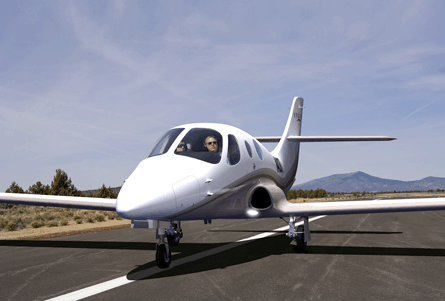Stratos Aircraft chief Alexander Craig says the company is in the final stages of selecting the avionics and engine providers for its Stratos 714 single-engined, five-seat personal jet.
The $2 million aircraft is being designed by the Bend, Oregon-based start-up to cruise at 400kt (740km/h) and 41,000ft (12,500m) with a range of 2,780km (1,500nm) with NBAA instrument flight rules reserves.
Engines will be provided by either Williams International with the 3,030lb-thrust (13kN) FJ44-3AP or by Pratt & Whitney Canada with a member of the 2,900-4,500lb-thrust PW500 family. Craig says there are three "finalists" vying for the avionics package.
To date, the company has received "several orders and deposits" for the aircraft, says Craig, and early customers are being offered a price cap incentive whereby deposits are held in an interest bearing escrow account at Wells Fargo Bank. Those federally insured deposits can be withdrawn "at any time", he adds.
 |
|---|
Perhaps a more telling indication of Stratos's level of commitment in bringing the all-composite design to fruition is its work to complete a Federal Aviation Administration-approved project-specific certification plan (PSCP), an agreement that defines the basis for how the jet will be certificated by the FAA's Seattle aircraft certification office.
While the makers of earlier personal jets like the D-Jet, PiperJet and Cirrus Vision were required to write "hundreds" of issue papers to identify certification criteria for a class of aircraft not covered by existing rules, Craig says a notice of proposed rulemaking on small turbojet-powered aircraft issued by the FAA in August - and used as the basis for Stratos's PSCP - means the company will not have to reinvent the wheel.
Craig says reusing the best practices and collective lessons learned by trailblazing personal jet makers such as Diamond "is one of the keys to managing cost and schedule" for Stratos. Diamond's D-Jet is the most mature among the new personal jet entrants and will likely to be first to gain certification, possibly in 2010.
That insight applies directly to the aerodynamic configuration of the aircraft which, like the D-Jet, has dual air intakes on either side of the fuselage near the wing root to deliver air to the single belly-mounted integrated turbofan engine.
Diamond has made several design iterations to determine the optimal positioning of the inlets.
"The beauty of what the D-Jet has done is that it has provided us with wonderful lessons learned," says Craig.
Source: Flight International



















